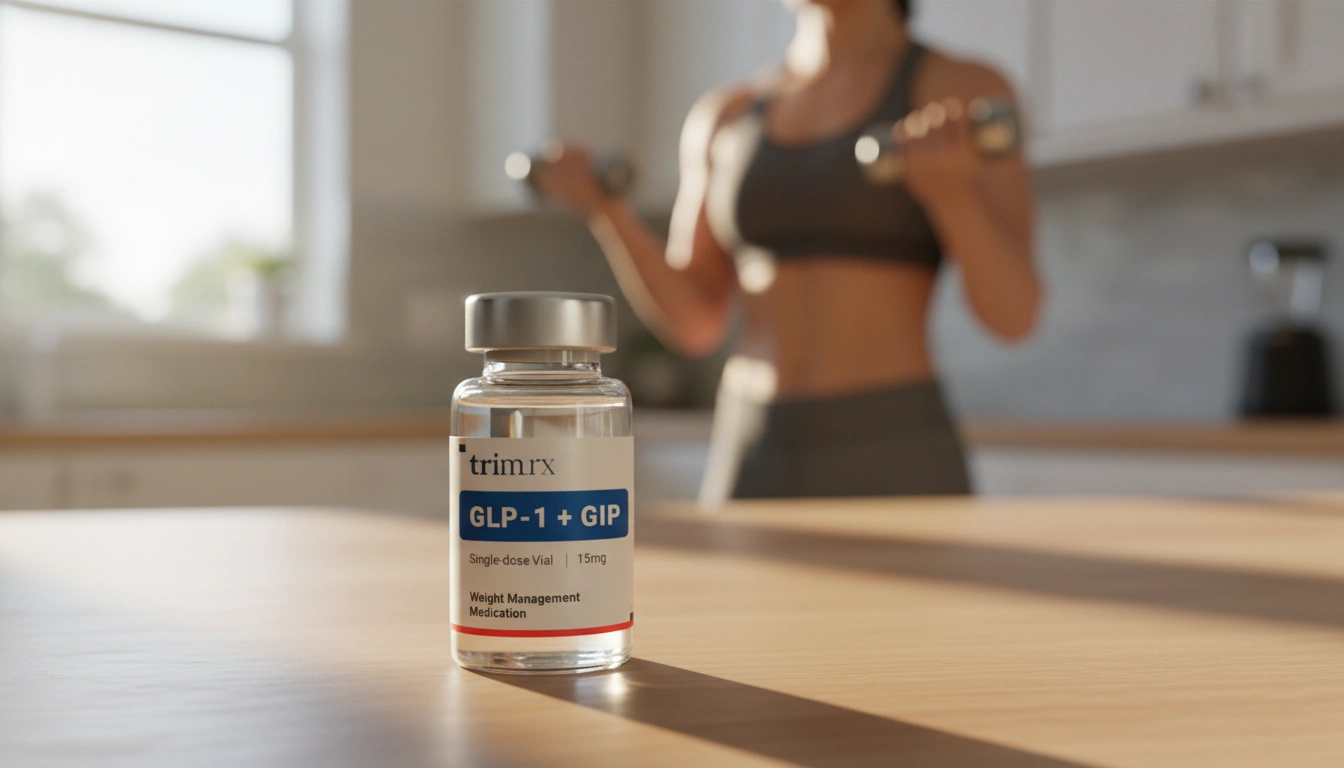How to Increase GLP-1: Natural Strategies for Weight Management

Introduction
Did you know that the impact of a small hormone produced in your gut could influence your appetite, weight, and overall metabolic health? This hormone, known as glucagon-like peptide-1 (GLP-1), plays a pivotal role in managing blood sugar and curbing hunger. In recent years, GLP-1 has gained significant attention for its effectiveness in weight management and its role in diabetes treatment. With the rising interest in this hormone, many are eager to learn how to naturally boost GLP-1 levels to support their weight loss journey.
In this blog post, we will explore the essential functions of GLP-1, its connection to weight management, and practical strategies to increase its production naturally. We’ll discuss dietary choices, lifestyle habits, and other factors that can contribute to enhancing GLP-1 levels in the body. By the end, you will have a comprehensive understanding of how to leverage GLP-1 to improve your metabolic health and support sustainable weight loss.
At TrimRx, we believe in empowering individuals with personalized, science-backed solutions for weight loss. Our commitment to empathy and innovation is reflected in our approach to weight management, combining advanced medical science with modern technology. Let’s embark on this journey together and uncover the strategies that can help elevate your GLP-1 levels.
Understanding GLP-1 and Its Role in Metabolism
GLP-1 is an incretin hormone secreted by the L-cells in the intestine in response to food intake. It has several critical functions that contribute to metabolic health:
-
Stimulating Insulin Secretion: GLP-1 enhances insulin secretion from the pancreas in a glucose-dependent manner, which helps lower blood sugar levels after meals.
-
Inhibiting Glucagon Release: It reduces the secretion of glucagon, a hormone that raises blood sugar levels, thereby maintaining glucose homeostasis.
-
Slowing Gastric Emptying: By slowing down the digestion process, GLP-1 helps prevent rapid spikes in blood sugar levels and promotes feelings of fullness.
-
Reducing Appetite: GLP-1 acts on the brain to signal satiety, effectively reducing the desire to eat and helping individuals manage their food intake.
Research has shown that higher levels of GLP-1 are associated with reduced body weight and improved metabolic health. Given its multifaceted role, increasing GLP-1 levels can be a beneficial strategy for those looking to manage their weight and improve their overall health.
Dietary Strategies to Increase GLP-1 Levels
1. Embrace Fiber-Rich Foods
Dietary fiber, particularly soluble fiber, is crucial for stimulating GLP-1 production. Foods that are high in fiber take longer to digest, leading to a gradual release of glucose and, consequently, an increase in GLP-1 levels. Here are some fiber-rich foods to include in your diet:
- Whole Grains: Barley, oats, and whole wheat are excellent sources of soluble fiber that support GLP-1 secretion.
- Fruits and Vegetables: Apples, pears, and leafy greens provide both fiber and essential nutrients that promote gut health.
- Legumes: Beans, lentils, and chickpeas are not only high in fiber but also protein, which contributes to satiety.
2. Incorporate Protein Sources
Protein has been shown to stimulate GLP-1 release. Including high-quality protein sources in meals can further enhance feelings of fullness and reduce overall calorie intake. Consider adding:
- Lean Meats: Chicken, turkey, and fish are great sources of protein that can help increase GLP-1 levels.
- Eggs: Rich in protein and healthy fats, eggs have been associated with lower blood sugar levels and increased satiety.
- Dairy Products: Greek yogurt and cottage cheese provide protein along with beneficial probiotics that support gut health.
3. Healthy Fats Matter
Healthy fats, particularly those found in avocados, nuts, and olive oil, can also contribute to GLP-1 secretion. These fats help slow gastric emptying and enhance the feeling of fullness. Incorporate:
- Avocados: Packed with healthy monounsaturated fats and fiber, they can enhance GLP-1 levels while keeping you satisfied.
- Nuts and Seeds: Almonds, walnuts, and chia seeds provide a good balance of healthy fats and protein.
- Olive Oil: Use extra virgin olive oil in dressings and cooking to benefit from its healthy fat content.
4. Prebiotics and Probiotics
The gut microbiome is essential for GLP-1 production. Prebiotics, which feed beneficial gut bacteria, can help enhance GLP-1 levels. Foods rich in prebiotics include:
- Garlic and Onions: These vegetables contain inulin, a type of prebiotic fiber that supports gut health.
- Asparagus and Bananas: Both are excellent sources of dietary fiber that promote a healthy gut microbiome.
Probiotics, found in fermented foods like yogurt, kefir, and kimchi, can also support gut health and potentially increase GLP-1 production.
5. Stay Hydrated
Staying hydrated is essential for overall health, including gut health. Drinking plenty of water can support digestion and help maintain a healthy gut microbiome. Aim for adequate hydration throughout the day, especially when consuming fiber-rich foods.
Lifestyle Changes to Boost GLP-1 Levels
1. Regular Physical Activity
Exercise has been shown to promote GLP-1 secretion and improve insulin sensitivity. Regular physical activity can lead to enhanced metabolic health and weight management. Aim for at least 150 minutes of moderate-intensity aerobic exercise each week, combined with strength training exercises on two or more days.
2. Prioritize Sleep
Lack of sleep can disrupt hormonal balance, including hormones that regulate appetite and metabolism. Aim for 7-9 hours of quality sleep per night to support overall health, including GLP-1 production.
3. Manage Stress
Chronic stress can negatively impact hormone levels and contribute to weight gain. Engaging in stress-reducing activities such as mindfulness, meditation, yoga, or deep breathing exercises can help manage stress levels and support hormonal balance.
Medical Options for GLP-1 Enhancement
In addition to natural approaches, there are prescription medications that mimic the effects of GLP-1, such as semaglutide (Ozempic, Wegovy) and tirzepatide (Mounjaro). These medications have been shown to be effective in promoting weight loss and improving metabolic health for individuals struggling with obesity or type 2 diabetes.
At TrimRx, we offer personalized weight loss programs that may include these medications, combined with comprehensive support and medical supervision. If you’re interested in exploring our options, we encourage you to take our free assessment quiz to determine your eligibility for our prescription weight loss medications.
Conclusion
Understanding how to increase GLP-1 levels naturally can empower you to take control of your weight and metabolic health. By embracing a diet rich in fiber, protein, and healthy fats, prioritizing physical activity, and making mindful lifestyle choices, you can enhance your body’s natural production of this important hormone.
At TrimRx, we believe that sustainable weight loss is achievable through personalized care and a science-backed approach. If you’re ready to take the next step in your weight loss journey, consider our personalized programs designed to support you in achieving your goals. Explore our GLP-1 Daily Support and Weight Loss Boost supplements for immediate support as you work towards enhancing your GLP-1 levels.
FAQ
What is GLP-1 and why is it important?
GLP-1 is a hormone produced in the gut that helps regulate blood sugar levels, promotes satiety, and supports weight management. It is crucial for maintaining metabolic health and preventing spikes in blood sugar.
How can I increase my GLP-1 levels naturally?
You can increase GLP-1 levels by consuming a diet rich in fiber, protein, and healthy fats, incorporating prebiotics and probiotics, staying hydrated, exercising regularly, managing stress, and prioritizing sleep.
What role do medications play in GLP-1 enhancement?
Prescription medications like semaglutide and tirzepatide mimic the effects of GLP-1 and have been shown to promote weight loss and improve metabolic health. These should be considered alongside lifestyle changes for optimal results.
Can physical activity influence GLP-1 levels?
Yes, regular physical activity has been shown to enhance GLP-1 secretion and improve insulin sensitivity, making it an essential component of weight management.
What are prebiotics and probiotics?
Prebiotics are non-digestible fibers that feed beneficial gut bacteria, while probiotics are live bacteria that can provide health benefits when consumed. Both can support gut health and potentially increase GLP-1 production.

Transforming Lives, One Step at a Time
Keep reading
Weight Loss Motivation Quote Generator
Struggling to stay motivated on your weight loss journey? Use our free quote generator for instant inspiration tailored to your mood!
Tracking Progress With GLP-1: What To Measure
Learn which metrics to track on GLP‑1 therapy—weight, waist, blood sugar, lipids, side effects, and non‑scale wins—and how often to monitor them.
Fatigue Solutions for Ozempic and Wegovy Users
Hydration, protein-rich meals, light activity, and better sleep can reduce medication-related fatigue and help maintain energy during weight-loss treatment.



